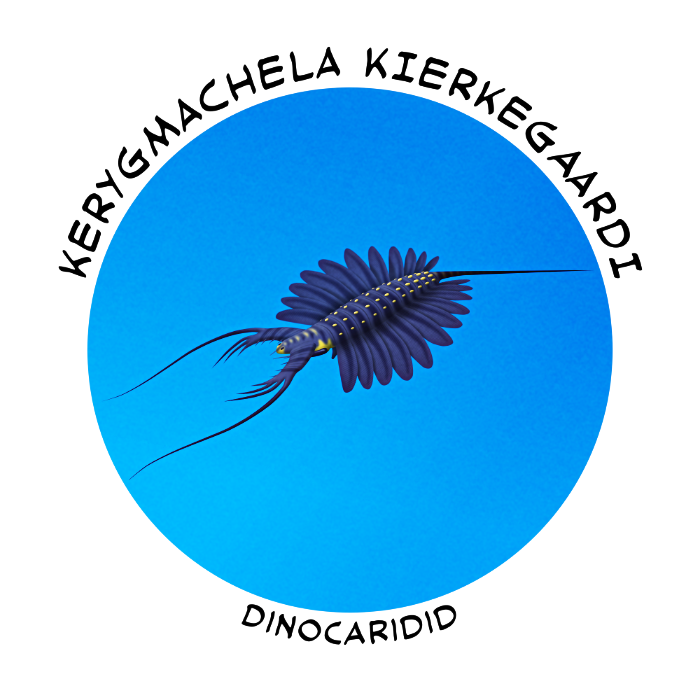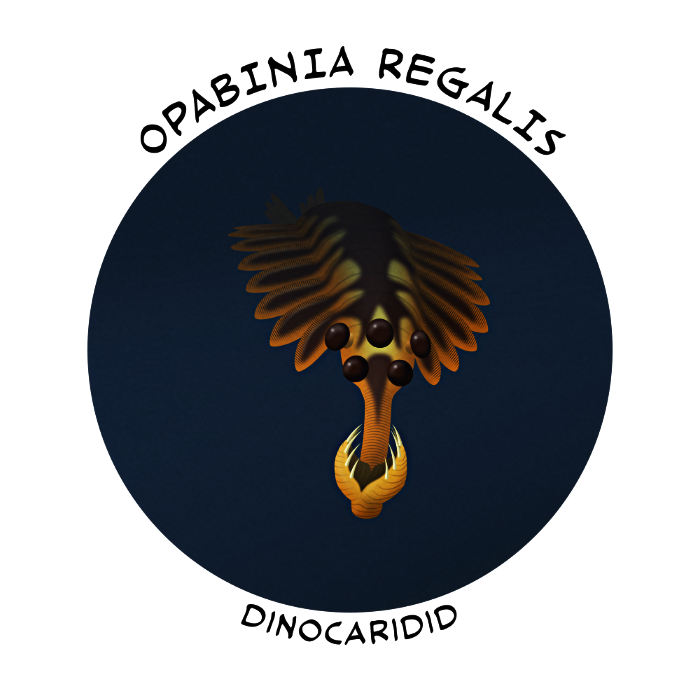Probably evolving from Siberion-like lobopodians, the dinocaridids were an “evolutionary grade” of panarthropods that were closely related to the ancestors of true arthropods. These animals were characterized by specialized front appendages on their heads and large swimming lobes along the sides of their segmented bodies, and their group included some of the most famous of the Cambrian “weird wonders”.
The earliest branches of the dinocaridids were the “gilled lobopodians”, which had lobopodian-like legs on their undersides and gills on the upper surfaces of their body lobes. The flap-like structures may have initially evolved just to provide a larger surface area for respiration, but they were quickly co-opted for swimming purposes and opened up a whole new range of ecological opportunities to the ancestral dinocaridids.

Kerygmachela kierkegaardi from the Sirius Passet fossil deposits in Greenland (~518 million years ago) is one of the best-understood gilled lobopodians, known from around 15 specimens.
It had a pair of slit-shaped compound eyes underneath the bases of its spiny front appendages, along with another pair of small structures at the front of its head that may have been additional simple eyes. Its total length was about 17cm (~7″), and it had 11 body segments with rows of bumpy ornamentation along its back, gill-bearing flaps at its sides, small lobopod-like legs on its underside, and a single long tail spine.
It may have been an active predator snaring prey with its front appendages, although its small mouth size suggests it was restricted to feeding on fairly small planktonic animals.
The closely-related gilled lobopodian Pambdelurion is also known from the same location as Kerygmachela, and had comb-like spines on its front appendages that suggest it may have been a filter-feeder. Another similar animal from the Chinese Chengjiang fossil deposits (~518 million years ago) known as “Parvibellus” may also be related, but as of the time of this post its description hasn’t yet been peer-reviewed or formally published.

And we can’t have a Cambrian series without including one of the most charismatic and bizarre-looking early dinocaridids: Opabinia regalis.
Known from the Canadian Burgess Shale deposits (~508 million years ago), this 7cm-long animal (~1.5-2.75″) seemed so strange when it was first properly reconstructed in the 1970s that the audience at the presentation laughed. With no evolutionary context for such an alien-looking creature at the time, it was initially assumed to be a “failed experiment” unrelated to any modern animal phyla – until later discoveries of similar Cambrian animals helped properly place it as a close relative of the “gilled lobopodians” and radiodonts.
It had five large stalked eyes on its head and a long flexible proboscis (resembling a vacuum cleaner hose) with a pincer-like structure at the tip, probably derived from a pair of fused grasping front appendages. Its backward-facing mouth was located on the bottom of its head, behind the base of its proboscis, and the rest of its segmented body had 15 pairs of overlapping swimming lobes and a three-part tail fan. Small triangular structures preserved on its underside may have been lobopodian-like legs.
It was probably a bottom-feeding predator or a detritivore, swimming along above the seafloor using its proboscis to probe around, snatching up small soft prey or organic material and then passing it up to its mouth. If the “triangles” on its underside were legs then it may also have been able to walk.
Its fossils are quite rare in the Burgess Shale, with only a few good specimens known, either due to it already being a very rare member of the ecosystem or because its free-swimming lifestyle made it so much less likely to be preserved.
And while we now know where it fits into the panarthropod family tree, Opabinia is surprisingly alone in its spot between the “gilled lobopodians” and radiodonts. No other close relatives have been found, no similarly trunked many-eyed weirdos… with a couple of possible exceptions.
The slightly older Myoscolex from the Australian Emu Bay Shale (~514 million years ago) may be a close relative of Opabinia, although the specimen is rather ambiguous and this interpretation is controversial, and it might instead be a polychaete worm. Additionally a not-yet-formally-named fossil from the Wheeler Shale in Utah, USA (~507 million years ago) may also represent a new opabiniid.
2022 EDIT: The Wheeler opabiniid has been named, and it’s now called Utaurora comosa!
